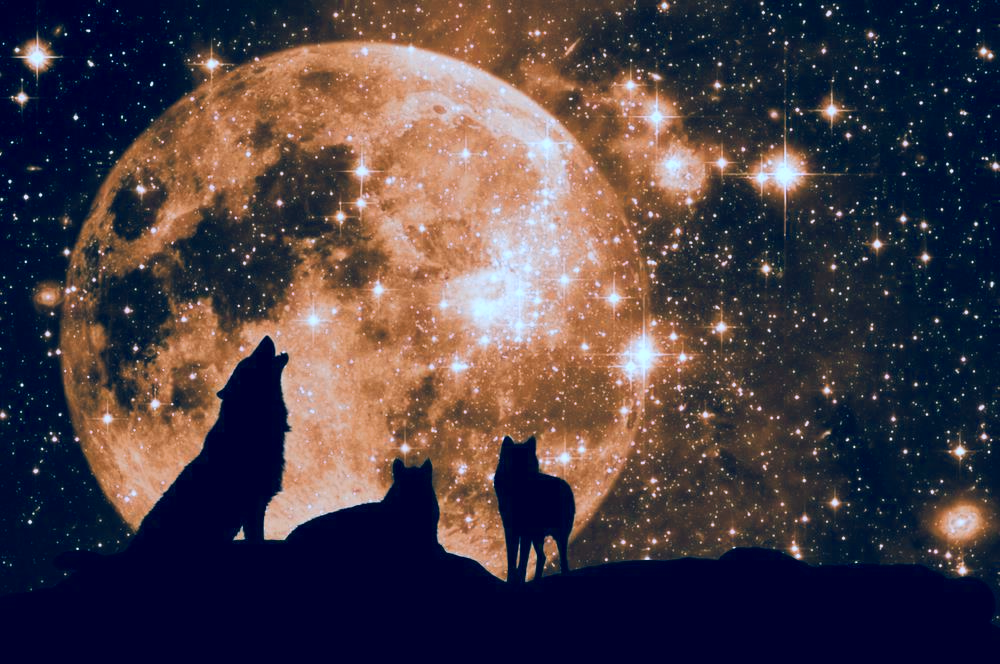The Universe
‘Wolf Moon Eclipse’: How to See 2020’s First of Thirteen Full Moons
The “Wolf Moon Eclipse” rises on Friday, January 10 and Saturday, January 11.

(TMU) — While the “Ring of Fire” eclipse of the Sun was visible to some on December 26, the upcoming “Wolf Moon Eclipse” on Friday, January 10 and Saturday, January 11 will be visible from Asia, parts of Australia, Europe, and Africa.
Unfortunately, North and South America will not be able to view the upcoming eclipse. Full Moon happens at the same moment worldwide, which, for this month’s Wolf Full Moon Eclipse will be at 7:21 pm Universal Time (UTC). In the United Sates, this means the Moon turns full at 2:21 pm Eastern, 1:11 pm Central, 12:11 pm Mountain, and 11:11 am Pacific —and will therefore only be visible in the U.S. during daylight hours.
The eclipse will be over and done with while the Moon is still beneath the horizon but both continents will still be able to enjoy the rise of the full Wolf Moon, which should provide a spectacle befitting of the first full moon and eclipse of 2020, and the decade.
The penumbral eclipse, such as the one on the January 10, occurs when Earth blocks some of the Sun’s light from reaching the Moon’s surface directly while it covers some or all of the Moon with the outer part of its shadow, known as the penumbra. The penumbra is much fainter than the dark core of Earth’s shadow, the umbra.
In 2020, there will be four penumbral lunar eclipses, two of which will be visible in North American. These lunar eclipses are different from a total lunar eclipse in that Earth’s outer shadow, the penumbra, is not as dense as it would be with a total eclipse of the Moon.
Depending on weather conditions, people in Asia, Australia, Europe, and Africa will be able to experience the Wolf Moon Eclipse, beginning at 5:07 pm Universal Time and reaching “maximum eclipse” at 7:10 pm Universal Time. You can convert Universal Time to your location/time zone here or here.
The eclipse will take about four hours from start to finish. Western Europe is fortunate to have the best seat in the house and will be able to watch the Wolf Moon rise in the east, followed by the eclipse shortly after.
Although North and South Americans will have missed the eclipse, the Wolf Moon rising in the east will be a sight worth setting a reminder for at 4:45 pm EST in New York and close to sunset at 5:10 pm PST in Los Angeles.
If you’re in one of these cities, check out the following times for “maximum eclipse” of the Wolf Moon. You’ll be able to see a dark shadow across the bottom half of the Moon:
- London: 7:10 p.m. on January 10
- Mainland Europe: 8:10 p.m. on January 10
- Cairo: 9:10 p.m. on January 10
- Moscow: 10:10 p.m. on January 10
- Dubai: 11:10:02 p.m. on January 10
- New Delhi: 12:40 a.m. on January 11
- Shanghai: 3:10 a.m. on January 11
- Perth: 3:10 a.m. on January 11
For those who unable to view the first penumbral lunar eclipse of the year, fear not—there are three more penumbral lunar eclipses in 2020:
- June 5, visible in Asia, Africa, and Australia
- July 5, visible in North and South America and Africa
- November 29, visible in North and South America, Australia, and East Asia
For all lovers of the cosmos, 2020 brings us a total of 13 full moons to enjoy. Since lunar months are 29 days long, every now and again there happens to be two moons in on month and this year October will have a full moon on the first and another on the thirty-first, the latter being a “blue moon.”
By Jade Small | Creative Commons | TheMindUnleashed.com
Typos, corrections and/or news tips? Email us at Contact@TheMindUnleashed.com
